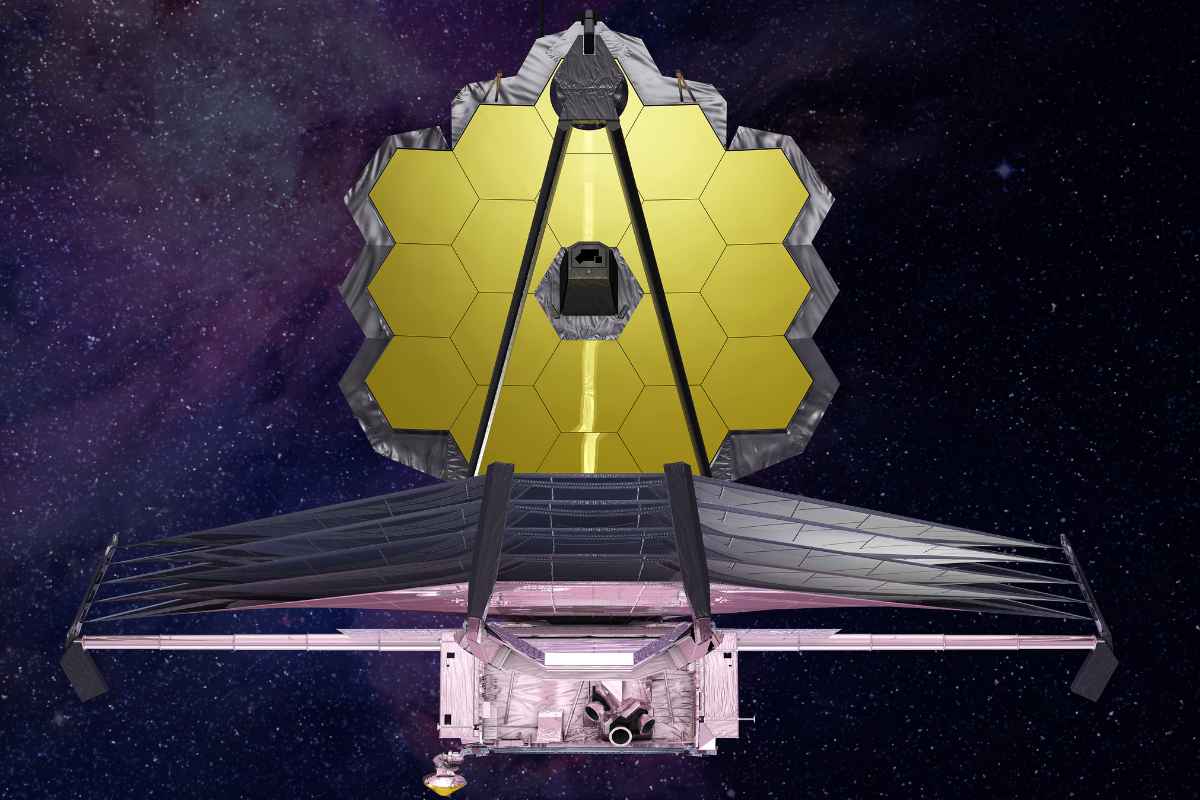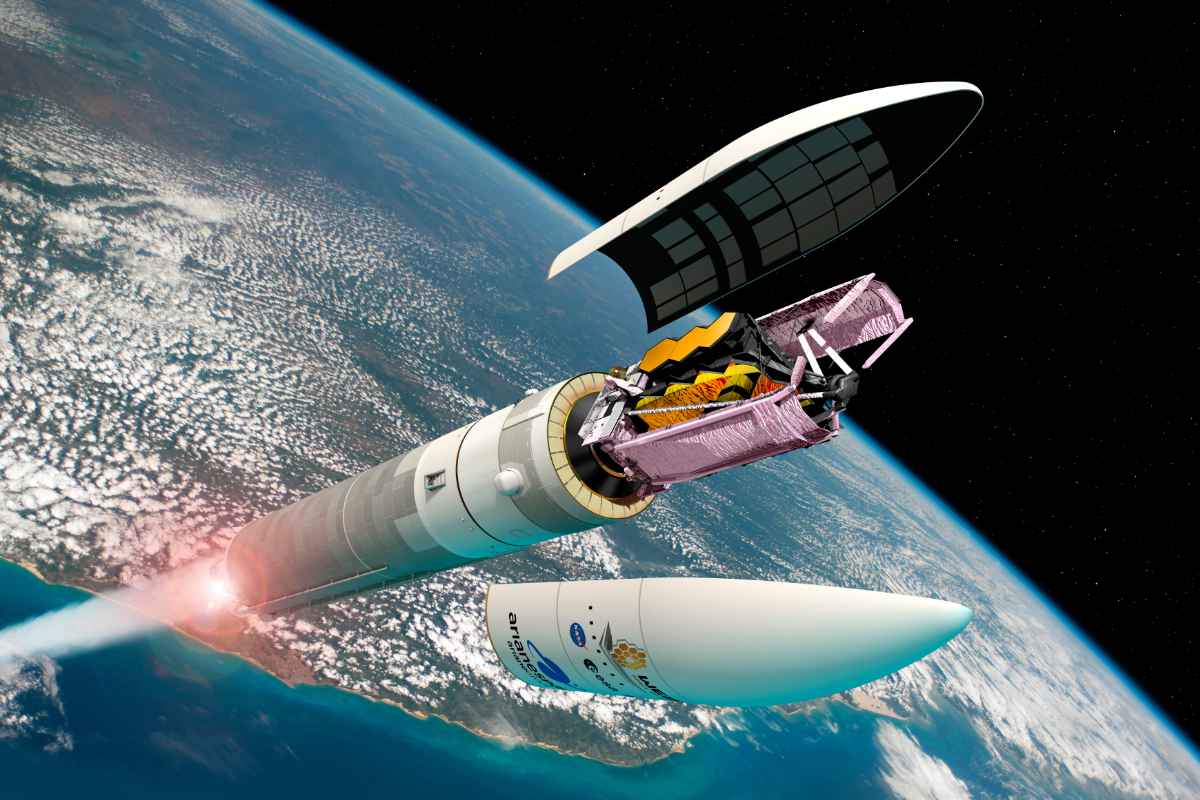

Scientists have managed to unfold the last part of the main mirror. An important step, because James Webb is now finally a fully functioning space telescope.
The primary mirror of the James Webb Space Telescope is made up of eighteen small segments covered in real gold. Before launch, the six segments on either side of the primary mirror were carefully folded back, otherwise the telescope would not fit into the Ariane 5 rocket.

Here you can see how James Webb – with his mirrors folded – was in the Ariane 5 rocket.

This beautiful photo clearly shows how the side panel is folded.
Yesterday, the left side panel – containing three of the six mirror segments – was successfully folded forward. This afternoon the other side panel with the last three mirrors followed. The mechanisms that had folded the side panel backwards had to come loose first. Then the engines on board the telescope were instructed to fold the side panel forward. This took about five minutes. It then took NASA engineers another two hours to secure the side panel. Fortunately, there were no problems and the main mirror is now positioned correctly. This was, of course, celebrated in Mission Control.
congratulations, @NASAWebb! You are fully deployed! 🥳
Stay tuned over the coming months as the space telescope reaches its destination of Lagrange point 2 and prepares to #UnfoldTheUniverse: pic.twitter.com/qg6jmVRCsH
— NASA (@NASA) January 8, 2022
On the way to L2
Although James Webb is now a real telescope, there is one important final step. The telescope needs another two weeks to reach Lagrange point 2. This is a point 1.5 million kilometers from Earth. Draw an imaginary line from the sun to the earth and extend the line just 1.5 million kilometers longer and you’re at L2. The great advantage of this position is that an object in L2 always maintains the same position relative to the sun and the earth. This makes communication and calibration with the object easier. Also, James Webb always has the sun, the earth and the moon behind him. This way, observations can continue around the clock.
And then: waiting for the first pictures
We then have to wait another five months for the very first images of James Webb. The telescope needs this time to calibrate the instruments and align the mirror segments so that they function together as one large mirror. That time is also necessary to allow the telescope to cool down further; the telescope must be very cold to be able to observe the infrared light from faint, distant objects. So just a little patience!